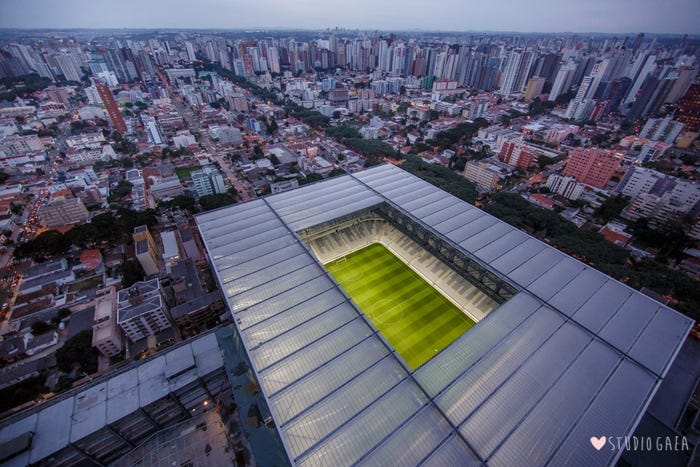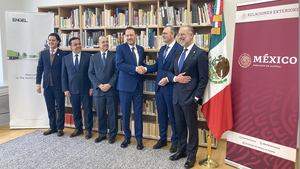World Cup stadiums let in the light with engineered thermoplastic roofing
Giving attendees of World Cup games a clear view of the action meant providing a lot of natural light.The Arena da Baixada (pictured), in Curitiba, Brazil, has long been the home of the Atlético Paranaense soccer team, and went through significant renovations in advance of 2014 World Cup games with Spain, Honduras, and Russia.
July 16, 2014
Giving attendees of World Cup games a clear view of the action meant providing a lot of natural light.
The Arena da Baixada (pictured), in Curitiba, Brazil, has long been the home of the Atlético Paranaense soccer team, and went through significant renovations in advance of 2014 World Cup games with Spain, Honduras, and Russia.
 Among the renovations: a new roof, using multi-layer Lexan Thermoclear sheet. Supplier SABIC said it is a material of choice for glazing applications where thermal insulation is a big consideration. Lexan is a family of engineering thermoplastic resins.
Among the renovations: a new roof, using multi-layer Lexan Thermoclear sheet. Supplier SABIC said it is a material of choice for glazing applications where thermal insulation is a big consideration. Lexan is a family of engineering thermoplastic resins.
The material can provide energy savings of more than 50%, compared to monolayer glass, largely thanks to the highly reflective surface of the sheet. The sheet offers a high level of impact performance over a wide temperature range (-40°C to 120°C) and is manufactured to provide a high level of resistance to degradation from UV radiation.
Architects also specified Lexan Thermoclick sheet systems to clad the stadium facade. The supplier describes the 40 mm sheets as having a unique five-wall X-structure. The system is designed to provide high light transmission and light diffusion along with a high level thermal insulation. This can help reduce power consumption, by as much as 17%, when compared to traditional double-pane glass glazing.
Architects who designed Arena Pantanal in Cuiabá, Brazil-a stadium constructed for the World Cup-also went with a Lexan roof. This time the material of choice was Exell D sheet, a monolithic material designed to be very tough but lightweight. The material is engineered to be high-impact, fire, and UV-resistant. It was used to create the 12,900-sq-m roofing and glazing of the new stadium in Cuiabá.
The supplier said the material provides spectators an excellent viewing experience with protecting them from changing weather conditions.
SABIC has supplied a total 53,620-sq-m of roof glazing and facades for four arenas in Brazil. IN addition to the two World Cup stadiums, the company's materials were used in the Coritiba Football Club Stadium in Curitiba and the Arena Gremio in Porto Alegre. The roof of the Arena Gremio was constructed using a customized blue Lexan Thermoclear sheet, and its durability and impact resistance helped it to remain undamaged in a violent windstorm during the stadium's construction.
The supplier's materials are used in more than 50 stadiums worldwide.
About the Author(s)
You May Also Like


